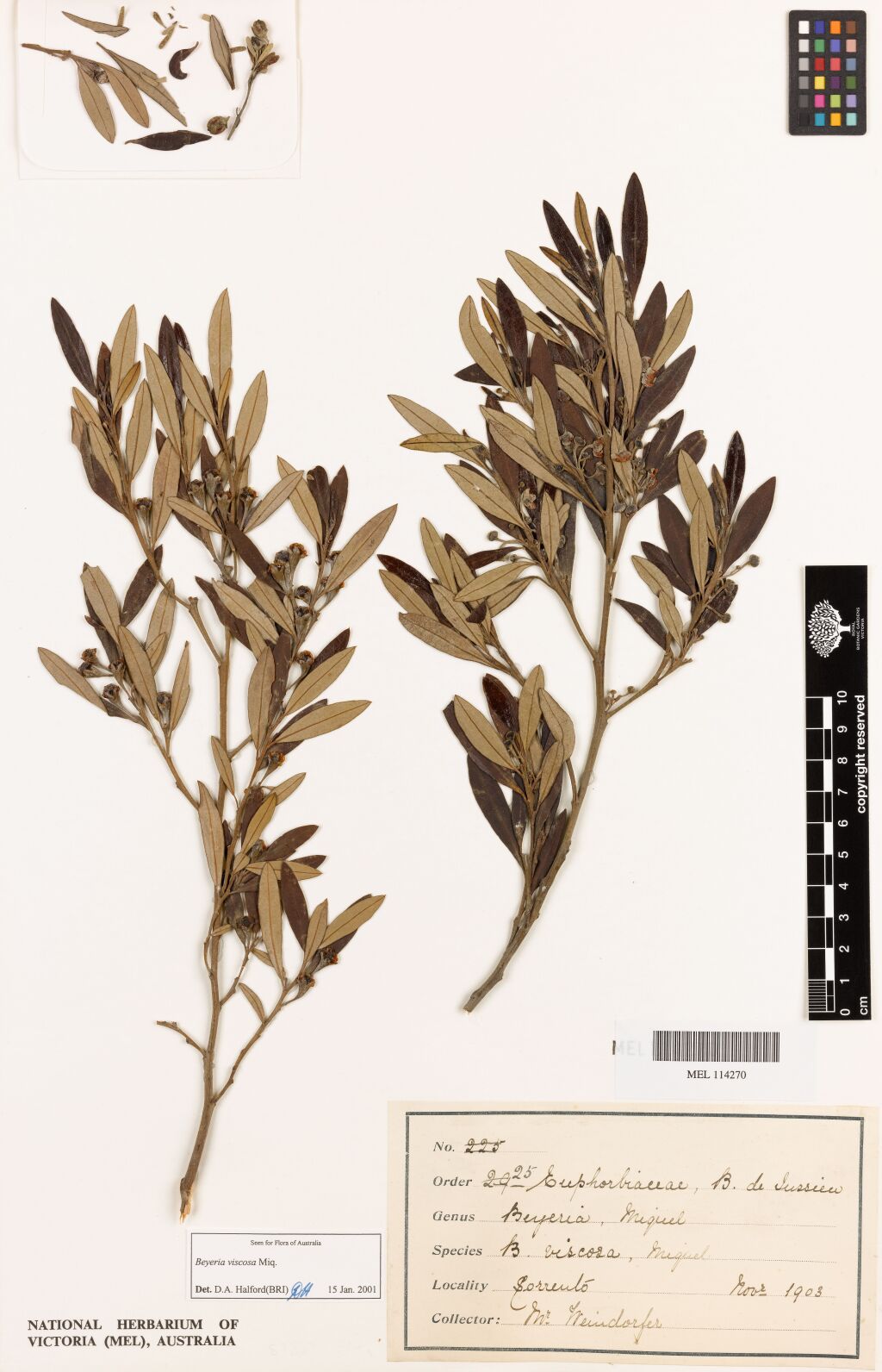Euphorbiaceae
Trees, shrubs, herbs or rarely climbers, monoecious or dioecious, sometimes with a milky latex. Leaves usually alternate, sometimes opposite, rarely whorled, simple, rarely compound or reduced to scales; stipules usually present although often small. Inflorescences mostly axillary cymes, sometimes arranged as bundles or in apparent racemes or spikes, or reduced to a single flower. Flowers small, usually regular, unisexual, often lacking sepals or petals; sepals and petals 4–6, but sometimes perianth not differentiated into sepals and petals. Male flowers with 1–many stamens; anthers 2-celled, dehiscing by longitudinal slits or sometimes by apical pores; rudimentary ovary sometimes present. Female flowers with ovary superior, usually 3-celled, ovules 1 or 2 per cell, placentation axile, styles usually 3, free or variously united, stigmas variable, usually papillose or laciniate, sometimes thick and entire; staminodes sometimes present; disc usually present below ovary. Fruit usually a 3-celled capsule or schizocarp, rarely a berry or drupe; seed usually with a leathery coat, often with a caruncle, endosperm fleshy or oily.
About 218 genera with c. 6745 species, cosmopolitan but chiefly in tropical and subtropical regions; 58 genera and over 200 species in Australia. The family has many members of economic importance, most notably Hevea brasiliensis (Willd.) Müll. Arg. (the latex is used to produce rubber), Manihot esculenta Crantz (the tuberous roots are a staple food in tropical areas), Ricinus communis L. (the seeds yield castor oil) and Vernicia fordii (Hemsl.) Airy Shaw (the seeds yield tung oil used in the paint industry). Several species of Euphorbia, especially E. milii Des Moul. (Crown of Thorns) and E. pulcherrima Willd. (Poinsettia) are grown as ornamentals.
The fruits of some species have been used as a food by Aboriginal people, e.g. Aleurites moluccana (L.) Willd., Hemicyclia australasica Müll. Arg. and Securinega obovata (Willd.) Müll. Arg.
Jeanes, J.A. (1999). Euphorbiaceae. In: Walsh, N.G.; Entwisle, T.J., Flora of Victoria Vol. 4, Cornaceae to Asteraceae, pp. 55–82. Inkata Press, Melbourne.
 Spinning
Spinning


